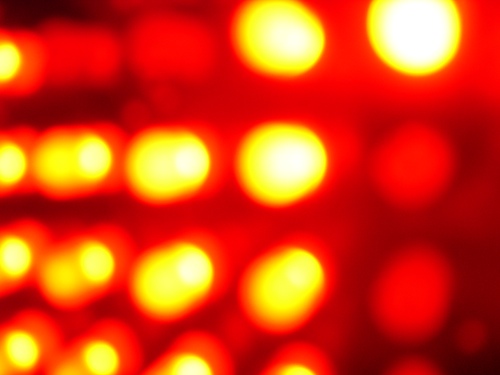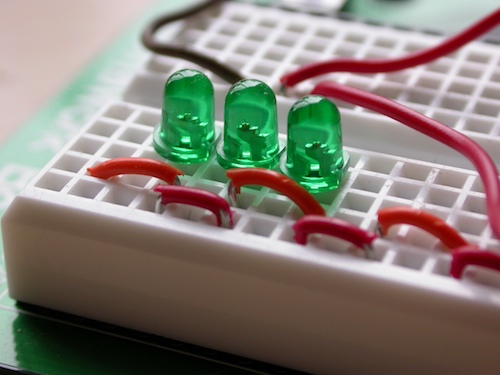Technology at its Best - The Samsung LED TV and Why it's Different
LED Tv, Plasma TV, TFT, and all sorts of other abbreviations are used in the tech and electronics world like normal people use ordinary words; people who know what they're talking about rarely, if ever, think about what's going on behind, or even what the expressions really mean. If you could just bear with me for a moment here, I'd make an attempt at explaining them to you, so that you don't feel left out of the conversation when the geeks get started, or when you look around for a new TV set, for that matter. Them sales people can really sell you on features by just talking fast and using language you don't necessarily understand.
To get you started, let's take a quick glance at Samsung just for good measure. Samsung, the company was founded by Lee Byung-chull, a korean businessman of land owner descents in 1938, a few years before World War II. It started out small, and on a field completely unrelated to technology or electronics; Mr. Byung-chull traded and had his own brand of noodles.
The company did well, but the war forced him to shift assets around and to build a sugar refinery. His experiences taught him to diversify and as a result the precursor of the current company began dealing with products other than those in the food industry.
Long story short, Samsung became the leader in different areas and industries, including electronics and computing. From the first black and white television set, just a few short years later they moved to being the biggest retailers and manufacturers of LCD and TFT display panels.

Samsung computer monitors are well respected by gamers and home cinema enthusiasts, and only partly because of the reputation of the company. I've always tried to stay close to the brand when I was about to put a new TFT monitor on my computer desk, because the price tended to be competitive and for the money, the displays were well made.
That said, I always picked my monitors from the middle range, being a college student at that time, and in that range Samsung was well represented. Their televisions are based on the same quality standard of displays, so I had no real inclination to look really hard among other brands when I had to recommend something to friends or family members.
TFT-LCD and the Way they Operate
With that much of preamble, it's high time we look at the technology that moves Samsung LED TV sets. I like to start explaining things from ground up, maybe because that's how my brain seems to operate, so if this feels tedious to you, feel free to jump ahead a few sub-headings, especially if you consider yourself somewhat of an expert on the field. Those who are still reading will now be presented with the bare minimum of what needs to be known about TFT-LCD.
Although TFT and LCD, as expressions, are used quite liberally when talking about TFT-LCD displays, you shouldn't confuse them to be synonyms to each other. LCD stands for Liquid-Crystal Display, and is a way to trick crystals into forming blocks with some applied electric current. When voltage is present between electrodes found behind and in front of the liquid-crystal layer, the substance that is normally transparent becomes opaque, thus black when lit from behind.
LCD is used widely in simple displays, where just a few segments need to be addressed, such as calculators, wrist-watches. You know them, they're fairly crude in their function.
TFT, Thin Film Transistor, takes LCD technology to the next level. The TFT layer consists of transparent transistors that act as one electrode of the pair that tricks LCD into doing things. The interesting feature of a TFT layer is that each transistor can be independently addressed and controlled, which basically steps the resolution up by a sizeable leap. In other words, TFT-LCD panels are capable of showing much more detailed images than the LCD on its own would have been able to.
Now, each pixel on the screen consists of three sub-pixels; red, blue and green respectively. By controlling these sub-pixels individually, the panel can display full color images without breaking a sweat. I hope you could follow thus far, if not, feel free to yell at me.
In flat-screen televisions, such as Samsung TV sets and other manufacturers' products, the backlight technology is based on CCFL tubes. If it's not stated otherwise, you can be sure that the light that is blocked or allowed to pass through by these sub-pixel LCD elements, is coming from cold-cathode fluorescent lamp tubes. These are like the ones that light hallways, train stations, your office or any place where energy efficiency is of any importance.
The tubes used in your telly are much more sophisticated than the ones used just for light, though. They need to be made according to high quality standards, if the manufacturer doesn't feel like dealing with swarms of returned units a year after the sale had been made. You can't just swap the inverter or the tube when either decides to cease operation, can you? Also, the more consistent color spectrum the television is ought to achieve, the better the tube needs to be. The closer it is to real, pure white, the better. It helps contrast ratio, color accuracy and a line of other things that are not absolutely necessary for complete understanding of why LED TVs are superior.

Light Emitting Diodes
LEDs have also came a long way since they were first put into real use in the early 1960s. Now you can walk into an electronic components store, and pick a LED in the color you happen to like, even white. White LEDs are particularly useful for lighting purposes, but due to their generally lower power output and the precise current and heat management they require to operate, they're fairly expensive. Price isn't quite the factor to rule a light source out against another, when we're talking about television sets that often swing to the far side of the $1,000 mark.
They make up for a small fraction of the end price, if you'd like to put it that way, so the financial aspect wasn't really the reason why LED TVs didn't prosper just a couple of years ago. The problem was that they weren't bright and white enough. Now that they are, we can all enjoy the benefits they bring over CCFL.
The one that pops right out at you when you simply look at a Samsung TV that uses CCFL and one that is based on LEDs in a short succession is how more alive the latter feels. If you've had this tingling feeling about LED TVs, I can assure you that you haven't gone crazy, it's the color accuracy. You can't really tell this for sure without using expensive equipment, but LED televisions sets are capable of producing more accurate colors, due to the better 'blending' of blue, green and red in the white you're looking at.
To make it sound more down to earth, LEDs have the advantage over CCFL tubes in the sense that that they're closer to real white than the latter. More consistent white means better calibration, which means nicer picture, which means more vivid scenes and better entertainment. You can get used to either technology, but it's all that much easier to get used to the better one.
The second most important benefit of Samsung LED TVs is their power consumption. If you can afford a $1,000 set, you are probably not that worried about electric bills, but when someone gives you $50, it makes perfect sense to take it, right? LEDs use less power to produce the same amount of light, which definitely shows at the end of the year, when you rifle through the electric bills. I'd go for LEDs just for this one particular benefit, even if it meant paying $100 more up-front for nothing else but the reduced power consumption.
The third one is durability. CCFL tubes use noble gases and vaporized mercury (which can't be thrown away in a truly satisfying eco-friendly way), and some phosphor to house break the UV light, which is produced inside. LEDs use a few wires, a small semiconductor piece, and the whole thing is molded into an acrylic blob. No gases, no vapor, no worries. LEDs are about as durable when it comes to shock, heat, vibration or dust resistance as an electronic component can possibly be, and I don't know about you, but that would give me at least some degree of peace of mind. Not only all that, but LEDs are virtually unkillable as far as scientists are concerned. They're rated at 10,000 to 100,000 hours of lifetime, but a great deal of the LEDs made in the 1970s are still in operation.
If you don't feed an LED with too much or too little current and don't apply too much heat(and in a Samsung LED TV that was designed by some of the best minds mankind has to offer, you don't), you can't make it die. An LED television will go out of fashion and become obsolete sooner than it would have any problem with its backlight. It would be struck by lightning twice before the LEDs would actually become old and stop operating due to sheer old age. That's how durable they are.
The fourth benefit is optional, as it isn't in direct correlation with the use of LEDs as much as it is in with the arrangement of said LEDs. Normal Samsung TVs that still use CCFL have their light tubes at the edges. The light coming from them is distributed by a diffusor layer, so that it's spread evenly across the screen. Most LED TVs have their LEDs arranged at the edges, in a similar fashion to CCFL tubes, due to financial decisions.
Some of the newer models use LED arrays that are placed behind the panel, like a grid. If you buy a TV that is built this way, you will experience the best contrast TFT-LCD technology has to offer. Since LEDs can be turned off and on, or adjusted to a certain brightness individually in a small fraction of a second, different parts of the screen can be lit differently.
Think of a scene of a movie where the actor's face reflects the light of a street lamp, and everything else is swallowed by the darkness of the night street. On an ordinary TV, where the contrast is about 2,000 to 1, you'd see some dark grey-ish black and the face would be of a brighter tone. On a LED array TV, the difference between the bright part of the scene and the rest is astonishing. I know it's been said a million times, but you really have to see this to understand all the ravings and cheering about the contrast ratio this kind of play with backlight allows.
Conclusion
LED based flat screen televisions, Samsung LED TV sets in particular, are not ground breaking as far as technology goes. It's the way they're built and put together that makes the real difference, and like I recommend every time I'm asked, I suggest you to go and take a look at them. If you have 46" or bigger flat screen TV that suffices and works without issues, you most probably don't have to spend a grand on a new one, just because of the LEDs.
If you have an older set, on the other hand, you most probably want to get one with the new technology, if budget allows, simply because there is no drawback other than the occasional pricing disagreement between CCFL and LED. You don't even have to think about it really hard; if the price isn't prohibitive, make sure it's LED, until something superior comes into play. Keep a tab on OLED TVs.








